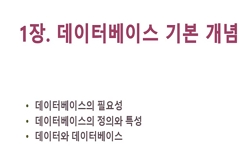Background: In South Korea, there is currently no syndromic surveillance system using internet search data, including Google Flu Trends. The purpose of this study was to investigate the correlation between national influenza surveillance data and Goog...
http://chineseinput.net/에서 pinyin(병음)방식으로 중국어를 변환할 수 있습니다.
변환된 중국어를 복사하여 사용하시면 됩니다.
- 中文 을 입력하시려면 zhongwen을 입력하시고 space를누르시면됩니다.
- 北京 을 입력하시려면 beijing을 입력하시고 space를 누르시면 됩니다.
Correlation between National Influenza Surveillance Data and Google Trends in South Korea = Correlation between National Influenza Surveillance Data and Google Trends in South Korea
한글로보기https://www.riss.kr/link?id=A99830276
- 저자
- 발행기관
- 학술지명
- 권호사항
-
발행연도
2013
-
작성언어
-
- 주제어
-
KDC
500
-
자료형태
학술저널
-
수록면
349-349(1쪽)
- 제공처
-
0
상세조회 -
0
다운로드
부가정보
다국어 초록 (Multilingual Abstract)
Background: In South Korea, there is currently no syndromic surveillance system using internet search data, including Google Flu Trends. The purpose of this study was to investigate the correlation between national influenza surveillance data and Google Trends in South Korea. Methods: Our study was based on a publicly available search engine database, Google Trends, using 12 influenza-related queries, from September 9, 2007 to September 8, 2012. National surveillance data were obtained from the Korea Centers for Disease Control and Prevention (KCDC) influenza-like illness (ILI) and virologic surveillance system. Pearson`s correlation coefficients were calculated to compare the national surveillance and the Google Trends data for the overall period and for 5 influenza seasons. Results: The correlation coefficient between the KCDC ILI and virologic surveillance data was 0.72(p<0.05). The highest correlation was between the Google Trends query of H1N1 and the ILI data, with a correlation coefficient of 0.53(p<0.05), for the overall study period. When compared with the KCDC virologic data, the Google Trends query of bird flu had the highest correlation with a correlation coefficient of 0.93(p<0.05) in the 2010-11 season. The following queries showed a statistically significant correlation coefficient compared with ILI data for three consecutive seasons: Tamiflu (r=0.59, 0.86, 0.90, p<0.05), new flu (r=0.64, 0.43, 0.70, p<0.05) and flu (r=0.68, 0.43, 0.77, p<0.05). Conclusion: In our study, we found that the Google Trends for certain queries using the survey on influenza correlated with national surveillance data in South Korea. The results of this study showed that Google Trends in the Korean language can be used as complementary data for influenza surveillance but was insufficient for the use of predictive models, such as Google Flu Trends.
동일학술지(권/호) 다른 논문
-
Target CPR performance metrics to ensure high quality CPR & clinical barriers
- 대한응급의학회
- 조규종
- 2013
-
연수강좌 10 : 소생술에 대한 환자의 반응을 모니터링 하기 위한 방법
- 대한응급의학회
- 손유동
- 2013
-
Mechanical CPR devices to improve CPR performance
- 대한응급의학회
- 차경철
- 2013
-
Systemic Continuous Quality Improvement Program for High-Quility CPR
- 대한응급의학회
- ( Hyun Kyung Park )
- 2013




 KISS
KISS






